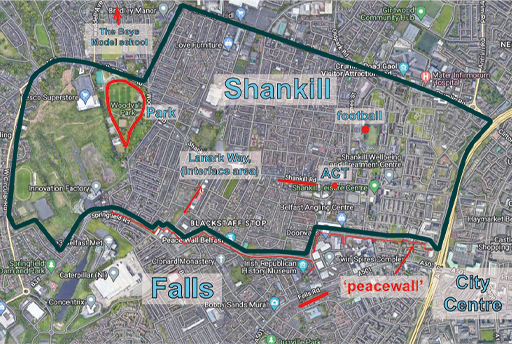2.1 Community as a place
One way of thinking about your community involves the place where you live and your connections to other people who live there. This could be local neighbourhoods or housing estates and surrounding streets, where people feel bounded by that local area. Matty and Dylan talk about the Shankill as being their community. For example, below is a map of the Shankill. The boundaries of the Shankill area that the boys live in are marked in dark green on this map.
So let’s take a look at how would you describe your local community.
Activity 4: Making a profile of your local community
This activity is to help you create a profile of your local community where you live. Thinking about your local area, list at least three points under each heading in the table below. You can do this activity on your own or in a group. This will be saved (as long as you are signed into OpenLearn and enrolled on this course) so you can return to it later in the course for other activities such as mind-mapping.
| Places: the important locations, places or spaces, including boundaries that are important to you and maybe to other young people you know. | People: the different groups of people in this location (the key different groups which live in your community for example in terms of faiths, cultures and/or ethnicities). | Issues: the issues that are currently of concern to you and other young people in the area. |
|---|---|---|
One way of thinking about community then is as a place, where particular people may feel connected, as well as being affected by particular issues in their area.

